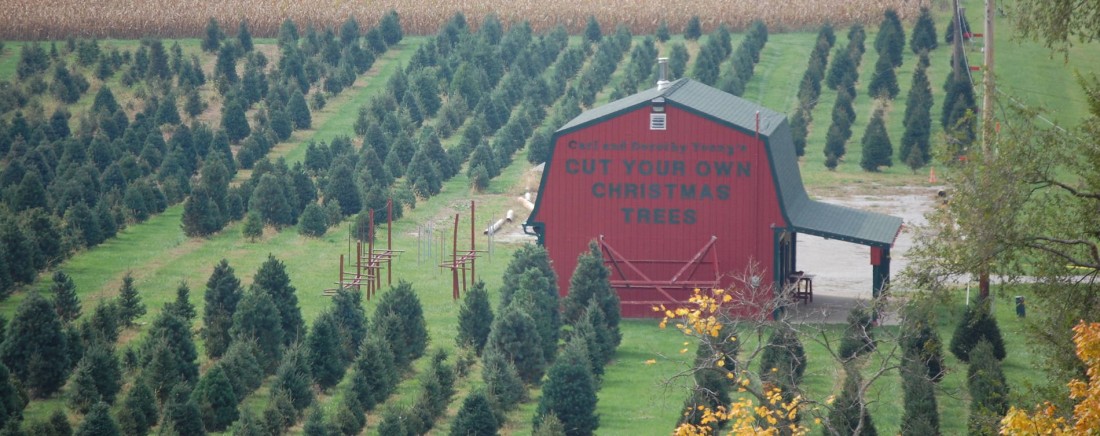
Christmas Trees: Real vs. Artificial
Which do you think is the more eco-friendly Christmas tree — real or artificial? It’s a curious question, and the answer might surprise you.
Last month Karen Zraick of the New York Times published an article that examines this very question. Here are the takeaways:
It is not always bad for the environment to cut down trees.
While “cutting down trees” conjures logging, deforestation, and extinction, the reality is that most people don’t scour the woods at Christmas, armed with bow saws and balers, in search of the perfect Douglas fir. Christmas trees, whether cut down or bought on a lot, are grown on farms.
Christmas tree farms! They may not the first thing that comes to mind when you think of Christmas trees, but they have a certain holiday romance about them. Zraick points out that real Christmas trees, then, are a crop.
For every tree that is felled at Christmas time, farmers tend to plant another in its place. And as these new trees grow, they clean the air and provide habitats and watersheds. Zraick also notes that Christmas tree farms preserve open land by virtue of their existence. That flips our original question on its side and raises another:
What’s more eco-friendly, to cut down a real Christmas tree from a local farm or to develop the land on which those farms sit for commercial use?
The reuse of artificial trees reduces their environmental impact.
The American Christmas Tree Association (ACTA; and yes, that’s a real thing) conducted a 2017 study, which found that 81 percent of the Christmas trees displayed in America are artificial. Most of these trees are made of copper, PVC plastic, and steel.
That may not seem eco-friendly, but according to Zraick, “The A.C.T.A., which represents manufacturers, claims the environmental impact is lower than that of a real tree if you use the artificial tree for five or more years.” There’s a fair chance that the A.C.T.A. makes this claim in order to get people to buy more artificial trees, but it raises another interesting question in how we measure the greenness of our Christmas trees:
Is it more eco-friendly to buy a real tree every year or to buy an artificial tree and replace it every five years?
We think it’s more eco-friendly to buy a real tree, as they are biodegradable and can be more readily used toward sustainable ends. Real trees can be used as mulch to enrich soil and prevent erosion at beaches or parks, or they can be sunk into lakes to create habitats for underwater wildlife.
On the other hand, artificial trees are harder to recycle. The copper, PVC plastic, and steel need to be separated in order to be processed and reused. And this assumes that the artificial tree makes it to a recycling plant rather than a landfill in the first place.
The greenest tree is bought locally and recycled responsibly.
In our view, the most eco-friendly option is to buy real trees from your local Christmas tree farm or lot and to recycle the tree responsibly — preferably before spring. To recycle the tree, consider gifting it to your neighborhood compost or mulch heap. Or sink it in your town’s lake. Or chop it up and use it as firewood. You’ll support not only the environment, but your local economy, too.
Zraick notes at the end of her article that Christmas trees are just a “drop in the bucket” when compared to the environmental impact of air travel and holiday shopping. To learn more about how you can reduce the impact of holiday waste, read our blog article from 2016.
The next time your Greenpeace cousin gives you flack for having a real tree in your home, we urge you to have the conversation about real Christmas trees versus artificial ones. If you’re not into the idea of spending time with family this holiday season, you have a great excuse that won’t hurt anyone’s feelings: “I’m sorry, Aunt Gladys. I’m not coming home to save the environment.”
Happy holidays from everyone at Remyndr. We hope that, however you choose to celebrate, your holidays are warm and bright.
Source:
Karen Zraick, “Real vs. Artificial Christmas Trees: Which Is the Greener Choice?” The New York Times, 2018.

No Comments